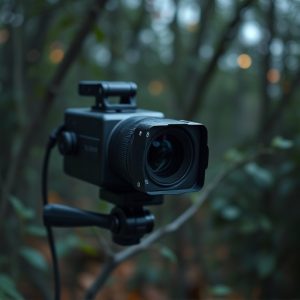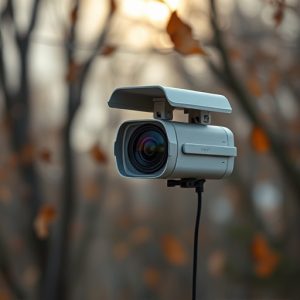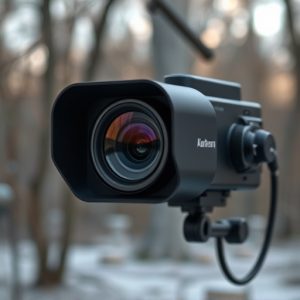Unveiling Hidden Spies: Reflecting Light to Detect Indoor Cameras with Night Vision
Spy cameras with indoor night vision capabilities pose significant privacy threats due to their adva…….
Spy cameras with indoor night vision capabilities pose significant privacy threats due to their advanced infrared technology and discreet design. To combat this, experts utilize optical principles to detect anomalies in light reflections, particularly effective in low-light conditions. This involves using UV lights, regular or smartphone cameras, and meticulous searching of common hiding spots. Professionals employ thermal imaging and IR scanners for a more comprehensive approach, identifying hidden cameras by analyzing heat signatures, ensuring thorough detection even when cameras are inactive. Understanding these techniques is crucial to identify potential indoor spy cameras with night vision capabilities.
Uncover the subtle signs of hidden surveillance with our guide to detecting indoor spy cameras equipped with night vision. In today’s tech-driven world, privacy concerns have grown, prompting the need for advanced methods like light reflection analysis. This article demystifies spy camera technology and provides a practical step-by-step approach to identifying their presence through light reflection patterns. Learn expert tips and utilize specialized tools to ensure you’re one step ahead in protecting your personal spaces from these covert devices.
- Understanding Spy Cameras and Their Hidden Presence
- The Science Behind Light Reflection Detection
- Implementing the Technique: Step-by-Step Guide
- Advanced Tips and Tools for Effective Camera Spotting
Understanding Spy Cameras and Their Hidden Presence
Spy cameras, also known as hidden cameras, have become increasingly sophisticated with advancements in technology. These devices are designed to capture video or still images discreetly, often without the knowledge of individuals being monitored. From indoor spy cameras equipped with night vision capabilities to more advanced models disguised as everyday objects, their prevalence has raised significant privacy concerns.
Understanding how these cameras operate is crucial for identifying potential hidden threats. Many indoor spy cameras utilize infrared technology for night vision, allowing them to capture clear images in low-light conditions. They can be concealed within everyday items like smoke detectors, light fixtures, or even seemingly innocuous wall art, making it challenging to detect their presence without specialized knowledge or tools.
The Science Behind Light Reflection Detection
The Science Behind Light Reflection Detection involves utilizing advanced optical principles and technology to uncover hidden spy cameras, particularly those equipped with night vision capabilities. When light encounters a reflective surface within an indoor environment, it bounces off in various directions, creating a complex pattern of reflections. By carefully analyzing these reflections, experts can identify anomalies indicative of the tiny sensors found in spy cameras. This method is especially effective in low-light conditions, as night vision devices emit minimal visible light while capturing images, making them susceptible to reflection-based detection.
The key lies in the precise measurement and interpretation of light intensity differences across a scene. Advanced algorithms process these data points, comparing them against known patterns generated from numerous indoor environments. This comparative analysis allows for the differentiation between normal reflective surfaces like walls or glass and the unique signatures left by spy camera sensors. Thus, even high-tech Indoor Spy Camera With Night Vision can be detected through this innovative light reflection technique.
Implementing the Technique: Step-by-Step Guide
Implementing the Technique: Step-by-Step Guide
1. Preparation: Begin by gathering your tools, including a portable UV light source (or a high-intensity flashlight with UV filters), a regular camera or smartphone, and a reflective surface like a metallic tape or mirror. Ensure you’re in a well-lit environment to maximize visibility during the process.
2. Location Scanning: Start scanning potential indoor areas where a spy camera with night vision might be hidden. Switch on your UV light source at each spot and observe the reflection. Look for any unusual patterns, distortions, or faint images reflecting from surfaces—these could indicate the presence of an invisible lens or sensor.
3. Reflected Light Analysis: If you notice any anomalies, use your regular camera or smartphone to capture high-resolution images of the reflection. Examine these closely; a spy camera’s night vision capabilities might leave behind digital artifacts or slightly altered light patterns.
4. Meticulous Search: Repeat this process across every nook and cranny, especially in common hidden spots like corners, behind picture frames, or under electrical outlets. Remember, dedicated spy cameras are designed to be compact and discreet, so they can easily blend into everyday surroundings.
Advanced Tips and Tools for Effective Camera Spotting
In the quest to detect covert spy cameras, especially indoor models with night vision capabilities, professionals employ advanced techniques and tools that go beyond mere visual inspection. One effective method is leveraging light reflection; understanding how light interacts with various surfaces can reveal hidden camera lenses. For instance, shining a bright, focused light source onto potential hiding spots and observing reflections or distortions on nearby walls or objects can indicate the presence of an indoor spy camera with night vision.
Additionally, utilizing specialized tools designed for camera detection, such as thermal imaging cameras, infrared (IR) scanners, and advanced sensors, significantly enhances accuracy. These tools can detect heat signatures associated with electronic devices, making them invaluable in identifying hidden spy cameras, even when they’re switched off or in standby mode. Combining these advanced techniques with a keen eye for detail ensures effective spotting of indoor spy cameras equipped with night vision features.
Spy cameras, especially those with night vision capabilities, can be covertly placed indoors, but their presence can be detected using advanced light reflection techniques. By understanding how these devices operate and employing a step-by-step guide to analyzing light reflections, individuals can become more vigilant in identifying potential hidden surveillance equipment. With the right tools and tips, as discussed in this article, you can enhance your privacy by spotting even the most subtle signs of an indoor spy camera with night vision.


